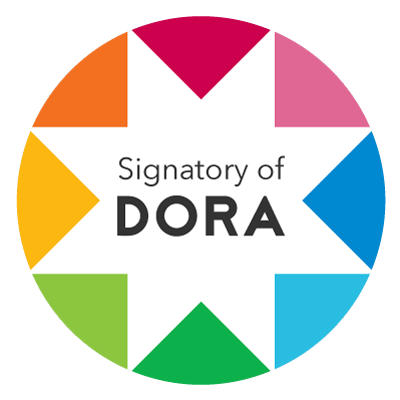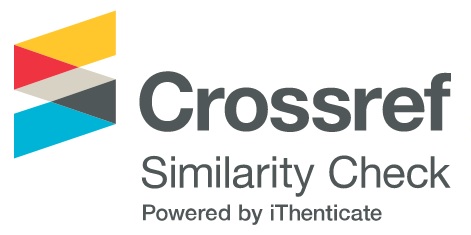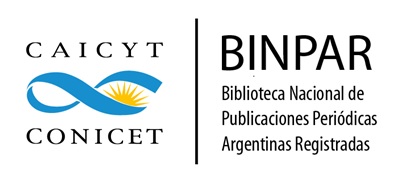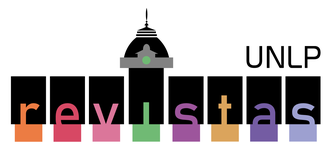Dating Relationship among Mexican Youths during Confinement
The Role of Virtual Social Media
DOI:
https://doi.org/10.24215/18524907e063Keywords:
dating relationship, confinement, virtual social media, young peopleAbstract
The aim of this research was describe the dating relationship of young mexicans during period due covid-19. Six young people ages 18 and 19 years from the Mexico City, were conducted in semi-structured interviews. The data obtained show that in the current situation of confinement dating experiences are being carried out through virtual social media and these are loving and care for the couple.
Downloads
Metrics
References
Asociación Mexicana de Internet. (2018). 13° Estudio sobre los hábitos de los usuarios de internet en México 2017. Recuperado de https://irpcdn.multiscreensite.com/81280eda/files/uploaded/11_Study_of_internet_users_Mexico.pdf
Bauman, Z. (2019). Amor líquido. Acerca de la fragilidad de los vínculos humanos. Undécima reimpresión. Ciudad de México, México: Fondo de Cultura Económica.
Berger, L. y Luckmann, T. (1986). La construcción social de la realidad. Ciudad Autónoma de Buenos Aires, Argentina: Amorrortu.
Blanco, M. A. (2014). Implicaciones del uso de las redes sociales en el aumento de la violencia de género en adolescentes. Comunicación y Medios, (30), 124-141. Recuperado de https://comunicacionymedios.uchile.cl/index.php/RCM/article/view/32375
Brito, L. R. (2002). Identidades juveniles y praxis divergente; acerca de la conceptualización de juventud. En D. A. Nateras (Coord.), Jóvenes, culturas e identidades urbanas (pp. 43-59). Ciudad de México, México: Universidad Autónoma Metropolitana.
Burr, V. (2015). Social Constructionism. New York, United States: Routledge.
Castells, M. (2001). La era de la información. Economía sociedad y cultura. Vol. II. El poder de la identidad. Ciudad de México, México: Siglo XXI.
Cervantes, P. y Tauste, O. (2015). Internet negro: el lado obscuro de la red. Barcelona, España: Paidós.
Crovi, D., Garay, L. M., Portillo, M. y López, R. (2013). Jóvenes y apropiación tecnológica. La vida como hipertexto. Ciudad de México, México: Océano.
Denzin, N. K. y Lincoln, Y. S. (2011). El campo de la investigación cualitativa. En N. K. Denzin y Y. S. Lincoln (Comps.), Manual de investigación cualitativa. Volumen 1. (pp. 43-102). Ciudad de México, México: Gedisa.
Dillon, A. (2013). Los vínculos y la conversación 2.0: miradas de adolescentes argentinos sobre Facebook. Global Media Journal México, 10(19), 43-68. Recuperado de https://gmjmexico.uanl.mx/index.php/GMJ_EI/article/view/18
Duarte, K. (2016). Genealogías del adultocentrismo. La constitución de un patriarcado adultocéntrico. En K. Duarte y C. Álvarez (Eds.), Juventudes en Chile. Miradas de jóvenes que investigan (pp. 17-48). Santiago de Chile, Chile: Facultad de Ciencias Sociales, Universidad
de Chile.
Durán, M. y Martínez, R. (2015). Ciberacoso mediante teléfono móvil e internet en las relaciones de noviazgo entre jóvenes. Comunicar,
(XXII), 159-167. https://doi.org/10.3916/C44-2015-17
Feixa, C., Fernández, A. y Figueras, M. (2016). Generación hasthtag. Los movimientos juveniles en la era de la web social. Revista Latinoamericana de Ciencias Sociales, Niñez y Juventud, 14(1), 107-120. https://doi.org/10.11600/1692715x.1416301115
Foucault, M. (2019) [1976]. Vigilar y castigar. Nacimiento de la prisión. Ciudad de México, México: Siglo XXI.
Gergen, K. (1985). The social constructionist movement in modern psychologist. American Psychologist, 40(3), 266- 275. https://psycnet.apa.org/doi/10.1037/0003-066X.40.3.266
Gergen, K. (1996). Realidades y relaciones. Aproximaciones a la construcción social. Barcelona, España: Paidós.
Gergen, K. (2012). La construcción social: emergencia y potencial. En M. Pakman (Comp.), Construcciones de la experiencia humana. Volumen I (pp. 139-175). Ciudad de México, México: Gedisa.
González, M., Becerra, M. T. y Yañez, M. B. (2016). Cyberactivism: A new form of participation for University Students. Comunicar, 46(XXIV),
-54. https://doi.org/10.3916/C46-2016-05
González, N. M. y Moreno, M. A. (2019). El pensamiento y las prácticas sociales en la era del mundo digital. En M. A. González (Comp.), El impacto de la vida digital en el mundo social (pp. 175-198). Ciudad de México, México: Universidad Nacional Autónoma de México, Facultad de Estudios Superiores Iztacala.
Goodman, W. K., Geige, A. M. y Wolf, J. M. (2017). Leisure Activities are Linked to Mental Health Benefits by Providing Time Structure: Comparing Employed, Unemployed and Homemakers. Journal of Epidemiology and Community Health, 71(1), 4-11. http://dx.doi.org/10.1136/jech-2016-207260
Guil, R., González-Fernández, S., Mestre, J. M., Zayas, A., Guerrero-Rodríguez, C. y Gil-Olarte, P. (2018). New Forms of Social Interaction: Virtual communication and Health. Duazary, 15(3), 263-272. https://doi.org/10.21676/2389783X.2417
Hans, J. (1995). El principio de responsabilidad. Ensayo de una ética para la civilización tecnológica. Barcelona, España: Herder.
Hudelson, P. M. (1994). Qualitative Research for Health Programmes. Geneva, Switzerland: World Health Organization.
Jaillier, É. (2010). Internet: ¿alternativa de socialización para los jóvenes en Colombia? Bogotá, Colombia: Universidad Pontificia Bolivariana.
Kemp, S. (2019). Digital 2019. Q3 Global Digital Stattshot. Essential Insights into how People Around the World Use the Internet, Mobile Devices, Social Media and E-Commerce. Vancouver, Canada: Hootsuite.
Kemp, S. (2020a). Digital 2020 Mexico. All the data, trends, and insights you need to help you understand how people use the internet, mobile, social media, and ecommerce. Vancouver, Canada: Hootsuite.
Kemp, S. (2020b). Digital 2020 july global statshot report. The latest insights into how people around the world use the internet, social media, mobile devices, and ecommerce. Vancouver, Canada: Hootsuite.
Lucio, L. A. y Prieto, M. T. (2014). Violencia en el ciberespacio en las relaciones de noviazgo adolescente. Un estudio exploratorio en estudiantes mexicanos de las escuelas preparatorias. Revista de Educación y Desarrollo, (31), 61-72. https://www.cucs.udg.mx/revistas/edu_desarrollo/anteriores/31/31_Lucio.pdf
Magnabosco Marra, M. (2014). El construccionismo social como abordaje teórico para la comprensión del abuso sexual. Revista de Psicología, 32(2), 220-242. https://doi.org/10.18800/psico.201402.002
Martín, A., Pazos, M., Montilla, M. V. C. y Romero, C. (2016). Una modalidad actual de violencia de género en parejas de jóvenes: las redes sociales. Educación XXI, 19(2), 405-429. https://doi.org/10.5944/educxx1.16473
Morelli, M., Bianchi, D., Baiocco, R., Pezzuti, L. y Chirumbolo, A. (2016). Sexting, Psychological Distress and Dating Violence among Adolescents and Young Adults. Psicothema, 28(2), 137-142. https://doi.org/10.7334/psicothema2015.193
Nateras, D. A. (2016). Juventudes sitiadas y resistencias afectivas. Tomo I. Violencias y aniquilamiento. Ciudad de México, México: Universidad Autónoma Metropolitana/Gedisa.
Organización Panamericana de la Salud. (2020). La OMS caracteriza al COVID-19 como una pandemia. Recuperado de https://cutt.ly/cTQFZXn
Pantoja-Meléndez, C. A. (8 de junio de 2020). Modelos epidemiológicos e inteligencia epidemiológica. Boletín sobre COVID-19, 1(4), 3-6. Recuperado de http://dsp.facmed.unam.mx/wpcontent/uploads/2013/12/COVID-19-No.4-03-Modelosepidemiológicos.pdf
Priebe, G., Mitchell, K. J. y Finkelhor, D. (2013). To tell or not to tell? Youth´s responses to unwanted internet experiences. Cyberpsychology:
Journal of Psychosocial Research on Cyberspace, 7(1), Article 6. https://doi.org/10.5817/CP2013-1-6
Reguillo Cruz, S. (2012). Culturas juveniles. Formas políticas del desencanto. Ciudad Autónoma de Buenos Aires, Argentina: Siglo XXI.
Rodríguez, N. (2015). El nuevo ideal del amor en adolescentes digitales. El control obsesivo dentro y fuera del mundo digital. Bilbao, España:
Descleé De Brouwer.
Rodríguez, T. y Rodríguez, Z. (2013). El amor con emoción y sentimiento en discursos grupales de jóvenes y adultos. En Y. Z. Rodríguez y T. Rodríguez (Coords), Sociedades y afectos. Vida cotidiana, nuevas tecnologías y producciones mediáticas (pp. 217-255). Ciudad de México, México: Universidad de Guadalajara, Centro Universitario de Ciencias Sociales y Humanidades Coordinación Editorial.
Rojas-Solís, J. L. y Flores Elvira, A. (2013). El noviazgo y otros vínculos afectivos de la juventud mexicana en una sociedad con características
postmodernas. Uaricha, 10(23), 120-139. Recuperado de http://www.revistauaricha.umich.mx/index.php/urp/article/view/91
Sánchez, L., Gutiérrez, M. E., Herrera, N., Ballesteros, M., Izzerdin, R. y Gómez, A. (2011). Representaciones sociales del noviazgo en adolescentes escolarizados de estratos bajo, medio y alto, en Bogotá.
Revista de Salud Pública, 13(1), 79-88. Recuperado de https://doi.org/10.1590/S0124-00642011000100007
Schensul, J. (2012). Methodology, Methods, and Tools in Qualitative Research. In S. Lapan, M. Quartaroli y F. Riemer (Eds.), Quality Research. An Introduction to Methods and Designs (pp. 69-103). New Jersey, United States: Jossey-Bass.
Schroer, W. (2008). Defining, managing, and marketing to generations X, Y and Z. The Portal, XL, 4-11. Recuperado de https://s3.amazonaws.com/rdcmsiam/files/production/public/newimages/portalpdfs/2008_03_04.pdf
Secretaría de Salud. (28 de febrero de 2020). Se confirma en México caso importado de coronavirus COVID-19. Recuperado de
https://www.gob.mx/salud/prensa/077-se-confirma-en-mexico-casoimportado-de-coronavirus-covid-19
Stonard, K. E., Bowen, E., Walker, K. y Price, S. A. (2017). «They´ll always find a way to get to you». Technology use in adolescent romantic relationships and its role in dating violence and abuse. Journal of Interpersonal Violence, 32(14), 2083-2117. https://doi.org/10.1177%2F0886260515590787
Straus, M. A. (2004). Prevalence of violence against dating partners by male and female university students worldwide. Violence Against Women, 10(7), 790-811. https://doi.org/10.1177%2F1077801204265552
Taylor, S. J. y Bogdan, R. (1984). Introducción a los métodos cualitativos de investigación. Ciudad de México, México: Paidós.
The Center for Generational Kinetics. (2016). Generational breakdown: Info about all of generations. Autisn, Texas: GenHQ. Recuperado de
https://genhq.com/faq-info-about-generations
Tizón, J. L. (2020). Salud emocional en tiempos de pandemia. Barcelona, España: Herder.
Trujillo, C. A., Naranjo, M. E., Lomas, K. R. y Merlo, M. R. (2019). Investigación cualitativa. Epistemología, consentimiento informado, entrevistas en profundidad. Ibarra, Ecuador: Editorial Universidad Técnica del Norte.
Van Ouytsel, J., Walrave, M., Ponnet, K. y Temple, J. R. (2016). Digital Forms of Dating Violence: What School Nurses Need to Know. NASN School Nurse, 31(6), 348-353. https://doi.org/10.1177%2F1942602X16659907
Van Ouytsel, J., Walrave, M., Ponnet, K., Willems, A. S. y Van Dam, M. (2019). Adolescents´ perceptions of digital media´s potential to elicit
jealously, conflict and monitoring behaviors within romantic relationships. Cyberpsychology: Journal of Psychosocial Research on Cyberspace, 13(3), article 3. http://dx.doi.org/10.5817/CP2019-3-3
Vázquez, F. (1996). El análisis de contenido temático. En F. Vázquez (Ed.), Objetivos y medios en la investigación psicosocial (pp. 48-70). Barcelona, España: Universitat Autónoma de Barcelona.
Additional Files
Published
How to Cite
Issue
Section
License
Copyright (c) 2021 Jessica Paola Obregón Patiño, Francisco Lorenzo Juárez García

This work is licensed under a Creative Commons Attribution-NonCommercial-ShareAlike 4.0 International License.
The acceptance of an original by the journal implies the non-exclusive transfer of the patrimonial rights of the authors in favor of the publisher, who allows the reuse, after its edition (postprint), under a Creative Commons License Attribution-NonCommercial-ShareAlike 4.0 International.
According to these terms, the material can be shared (copy and redistribute in any medium or format) and adapted (remix, transform and create another work from the material), provided that a) the authorship and the original source of their publication (magazine and URL of the work) are cited, b) is not used for commercial purposes and c) the same terms of the license are maintained.
The assignment of non-exclusive rights implies that after postprint in Revista Argentina de Estudios de Juventud authors may publish their work in any language, media and format; in that case, it is requested that they signal that the material was originally published by this journal.
Assignment also entails the authors’ authorization for the work to be collected by SEDICI, the institutional repository of the Universidad Nacional de La Plata, and for it to be indexed in the databases that the publisher thinks appropriate for enhancing the visibility of the published work and its authors.
In addition, the journal encourages authors to submit their works to other institutional and thematic repositories after their publication in Revista Argentina de Estudios de Juventud, under the assumption that offering society unrestricted access to scientific and academic production contributes to a greater exchange in global knowledge.

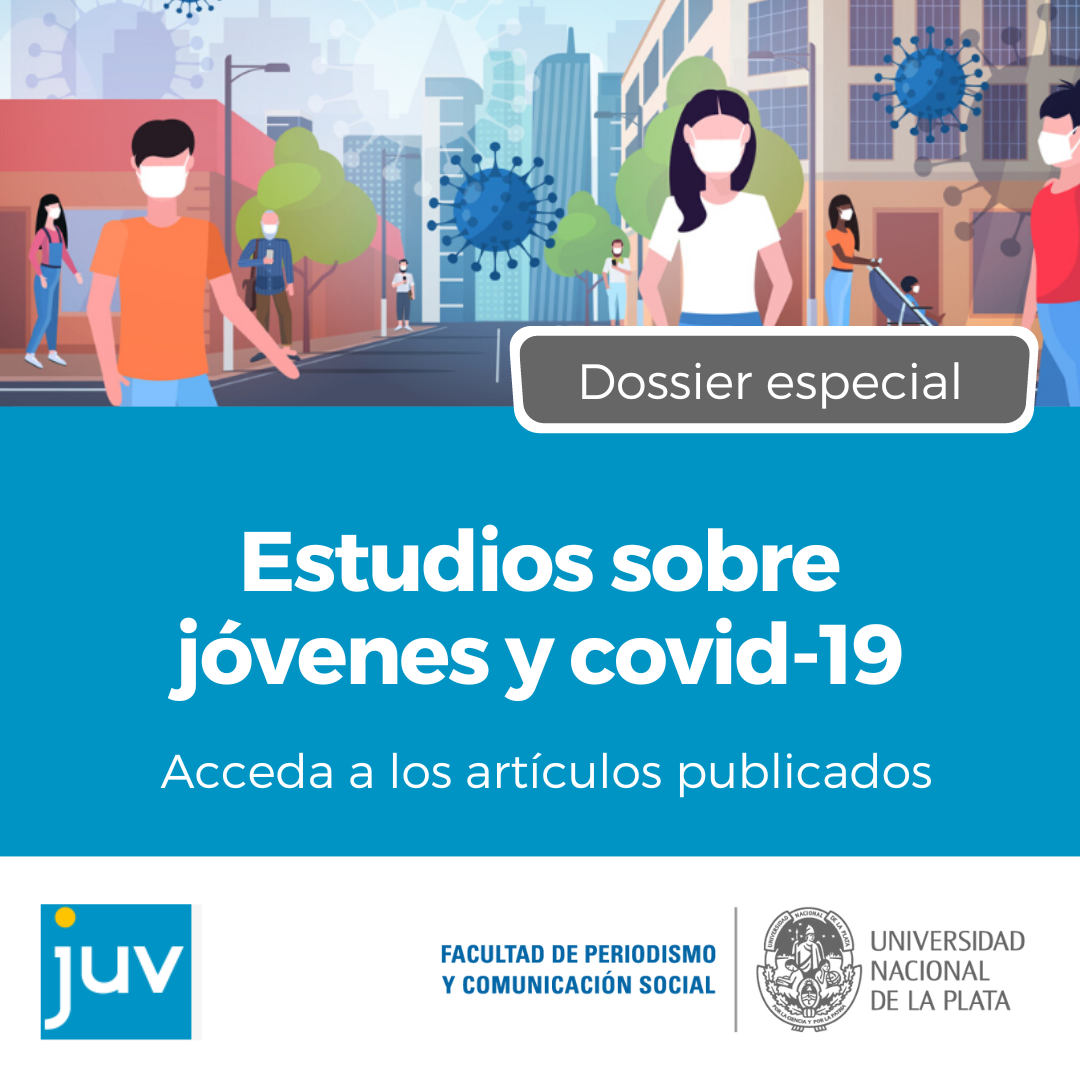





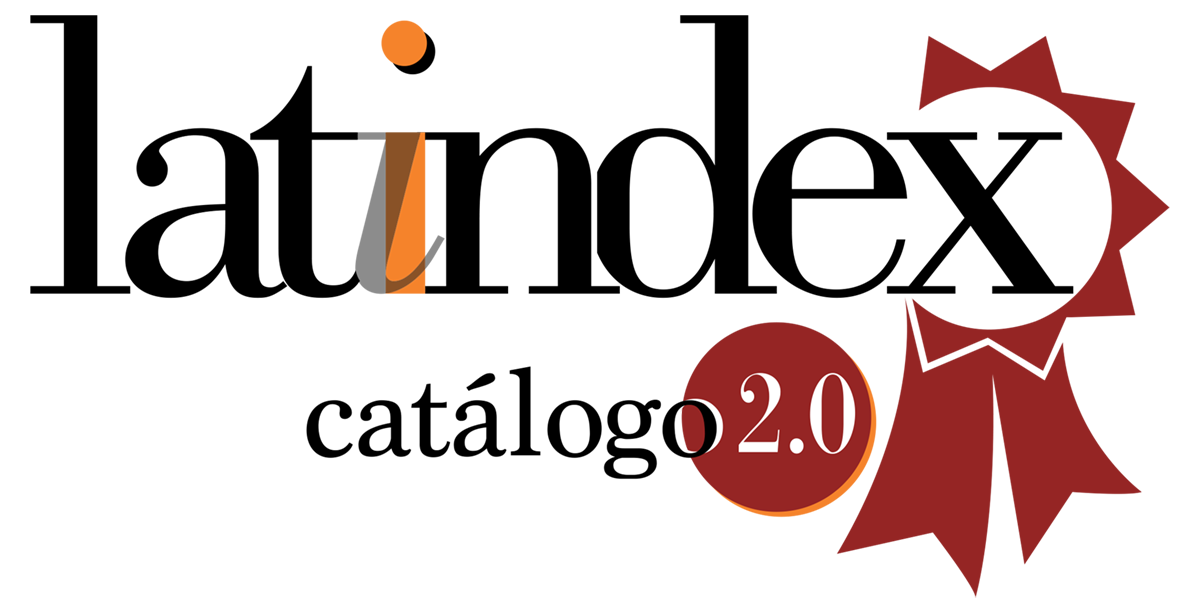

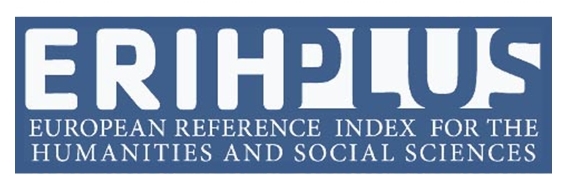



.png)








